Renault Kangoo E-Tech van review (2024)
The Renault Kangoo, the original small electric van, gets a welcome and long-awaited new model
PROS
- Smooth to drive
- Electric range competitive with rivals
- Rapid charging as standard
- Good safety kit available
- Decent towing ability
CONS
- Only one battery option
- Range less than 200 miles
- Payload doesn’t match up with diesel alternatives
- Right-hand-drive models don’t get clever kit
- Notable road noise
Summary
The Renault Kangoo E-Tech is the second generation of small electric van from the French company, coming at a time when many other van manufacturers are only getting around to releasing their first. The original Renault Kangoo Z.E. went on sale in 2012 but the 2024 E-Tech is a much improved small EV commercial vehicle.
The competition might have been later to the game, but there are some strong rivals out there now - read on to find out if Renault is still up with the best.
Renault Kangoo E-Tech versions
There is an element of choice when it comes to picking your Kangoo E-Tech but not masses. There is only the one battery option – putting in a bigger one would drastically reduce the space and payload on offer – and only the one motor, so only one power output.
There is a little choice when it comes to body size as there is an L1 and an L2 version, named ML and LL. Both are available to buy now.
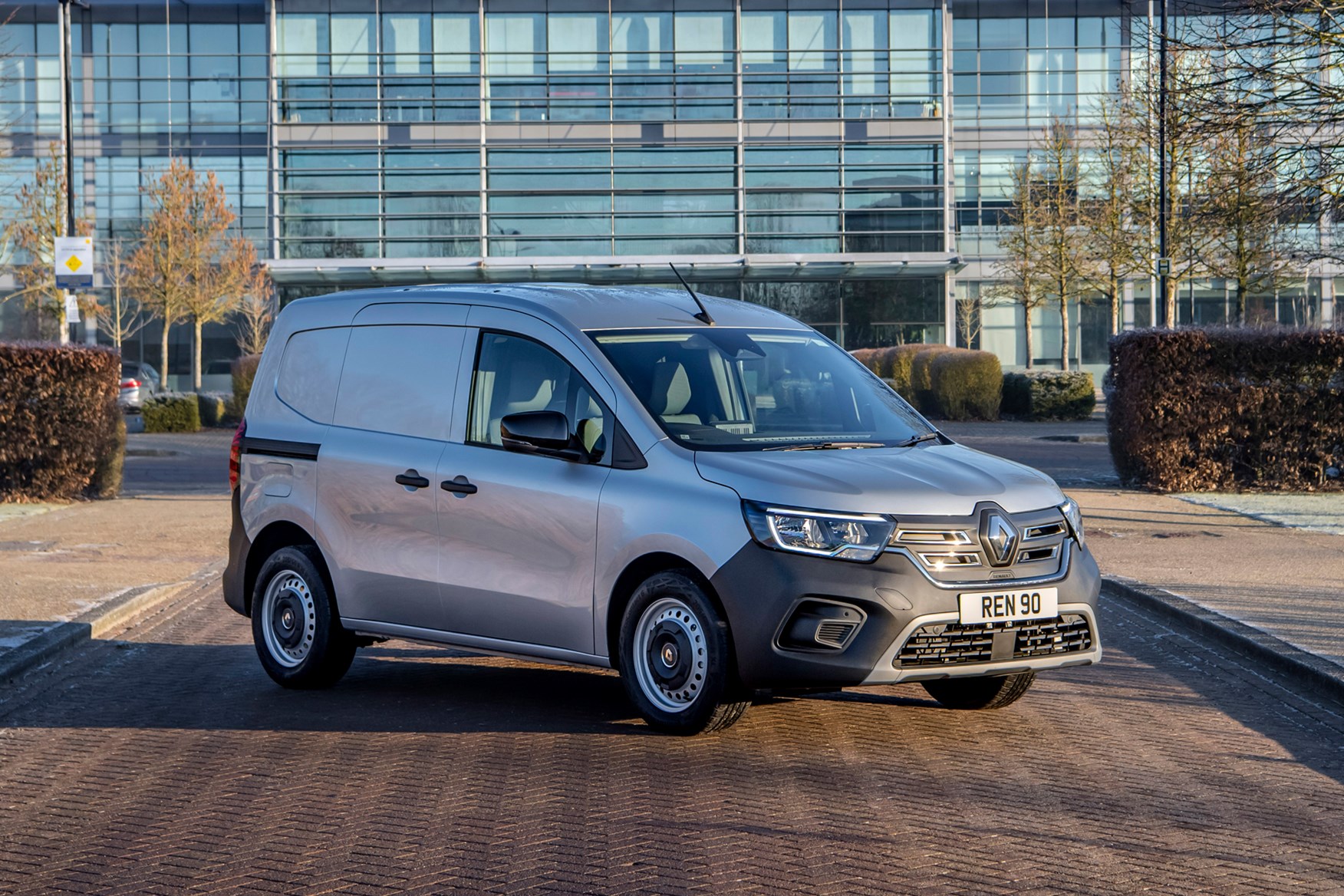
There are only two trims in the UK – Start and Advance. Thankfully both are available in both lengths. Unusually, it is the longer of the two that comes with the higher payload. This is due to a heavier duty rear axle on the LL version that is not offered on the shorter electric model.
It’s a real shame that the UK doesn’t get some of the genuinely innovative systems that the left-hand drive models offer though – a so-called ‘Open Sesame’ side door that does away with the B-pillar and allows for a huge opening on the passenger side is the pick of these.
What is the Renault Kangoo E-Tech’s range?
The Kangoo E-Tech comes with just the one battery and motor combo. This is a 45kWh lithium-ion battery that offers a range of up to 186 miles. The 90kW (121hp) motor provides 245Nm of torque and a comparatively nippy 0-62mph time of 11.6 seconds. The top speed is limited to 81mph, though, in a bid to save battery. The Eco mode severely restricts the amount of power available - halving it to just 60hp.
There are no plans for adding a second, longer-range battery, so this is the only option. This mirrors the offering in rival small electric vans, though - a choice of batteries is not normally available until you go up to the medium-van sector.
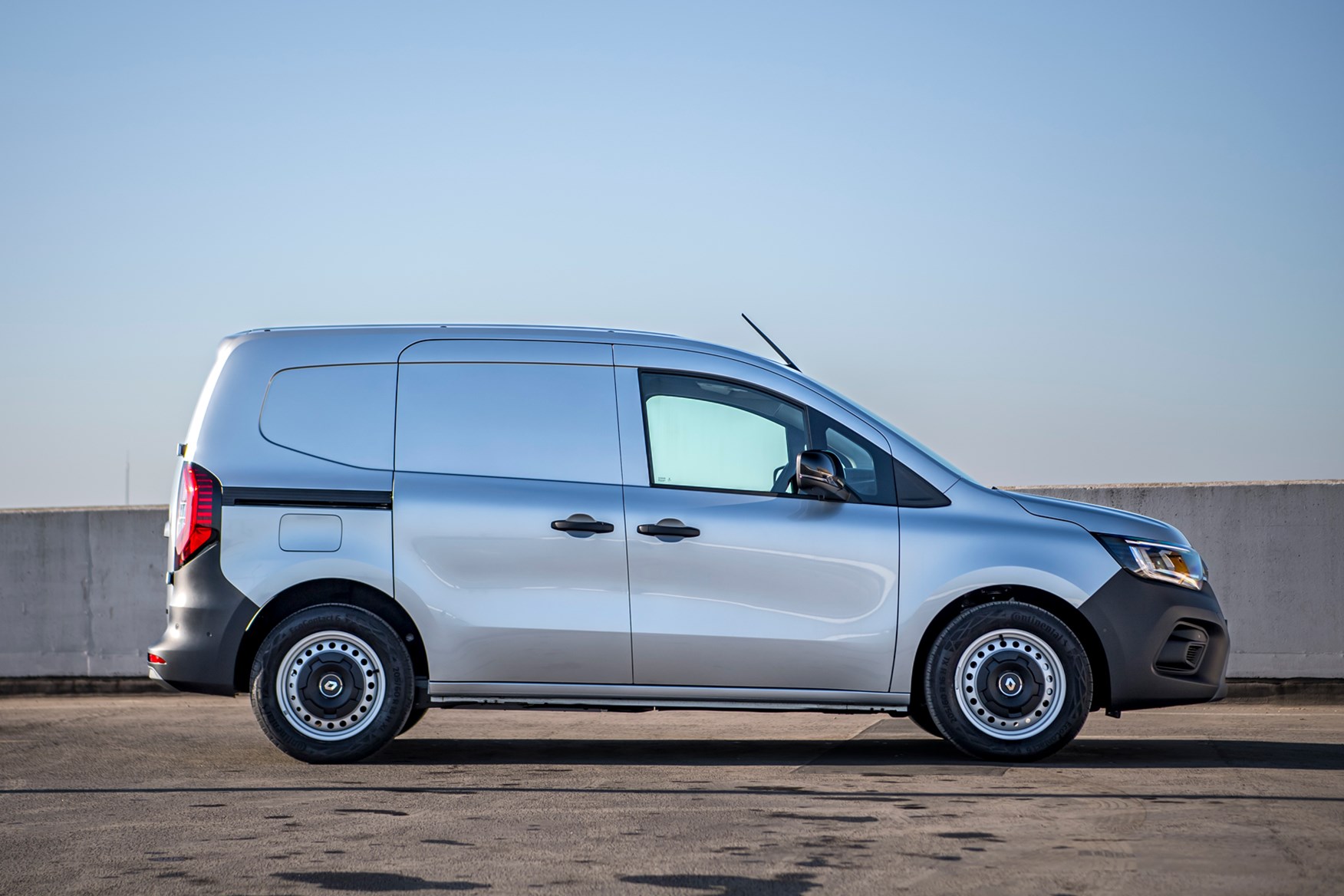
What are the Renault Kangoo E-Tech’s rivals?
A host of manufacturers have small electric vans on sale. However, this isn’t to say that there is a vast amount of choice for buyers as many of them are essentially the same van.
The Citroen e-Berlingo, Peugeot e-Partner, Toyota Proace City Electric and Vauxhall Combo-e are all soon to be joined by the Fiat E-Doblo and all five are basically the same as one another with minor tweaks to equipment, badging and warranty.
There are also two rivals much closer to home. The Mercedes Citan and Nissan Townstar were developed alongside the Kangoo and both come with an electric version. The electric version of the Nissan Townstar is closest to the Kangoo (it differentiates itself by offering a petrol rather than a diesel engine) as the Citan has more bespoke elements such as the suspension.
If you want something different then you could head down the line of a Chinese imported van. The Maxus eDeliver3 might not be a familiar name to many but it has factors in its favour.
Is the Renault Kangoo E-Tech any good?
The Kangoo E-Tech is solidly competent rather than a model that moves the game on in the way that the first version did by bringing electrification to a mainstream commercial vehicle.
In a way that’s a shame as you sense that there is a bit of a missed opportunity – it’s just one of a very good crowd rather than a standout class leader these days. The kit that is offered on the left-hand drive models but not in the UK would have helped give it that USP but that is not to be.
That said, the electric versions of the Berlingo, Partner and Combo etc might have set the benchmark for small electric vans but the Kangoo E-Tech has matched this standard and can be considered as good as it gets in the class.
Skip to our full verdict on...
- Comfortable and easy to drive
- Little noise from the motor
- Road noise kept out thanks to solid bulkhead
The Renault Kangoo E-Tech has made a big leap in many ways over the earlier generations of electric vehicles from a decade ago, and this is particularly evident in how it drives.
It embodies many of the attributes that make electric vehicles a pleasant experience, as it is smooth, quiet and simple to operate.
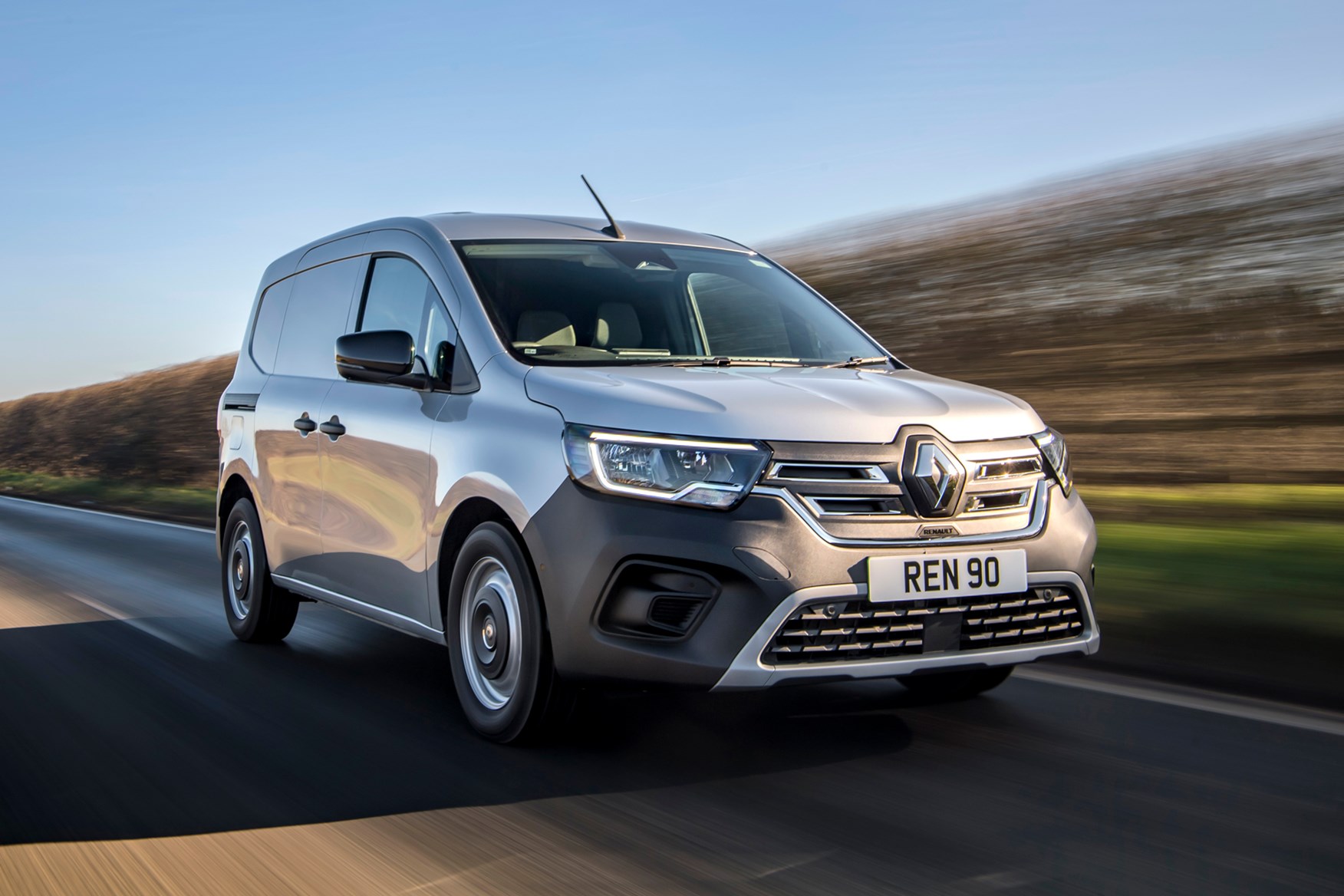
Getting going is simple, with keyless start and a conventional-style gear lever that means that the uninitiated will feel unthreatened by the move to electric.
What is it like to drive?
The smoothness of the electric motor is evident right from the off, as there is a fair amount of power available from a standstill. You don’t get the same amount of instant acceleration as you do in some electric cars, though, but this is probably no bad thing if you don’t want to send the contents of the loading bay flying.
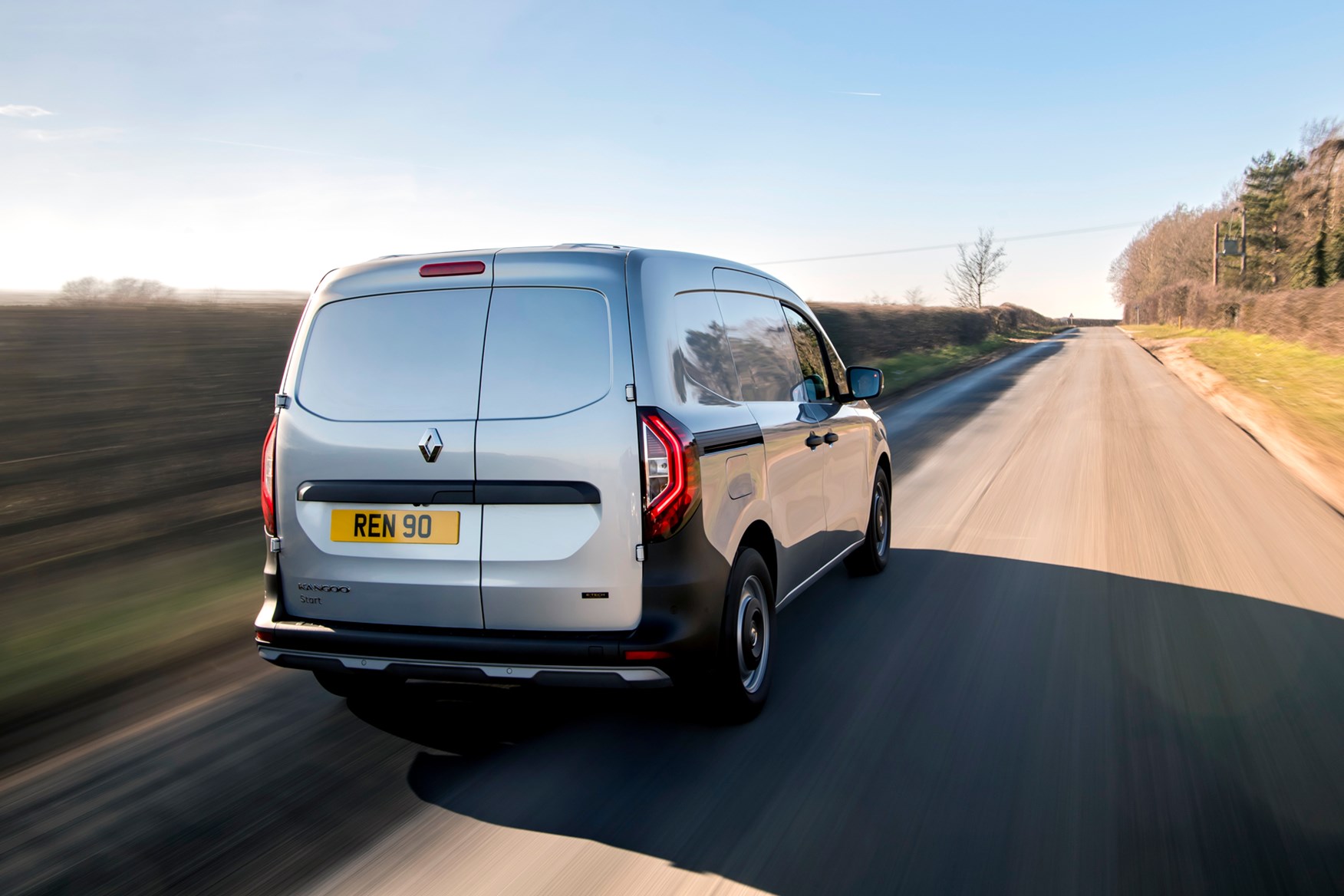
The on-the-move acceleration is similarly on-demand, but the result is progressive rather than instantaneous.
You can set the Kangoo up in various different ways in terms of how it drives. Although there are only two driving modes – the choice is between Normal and Eco – there are three different brake regeneration settings. These are adjusted via the gear lever and essentially range from ‘none’ to ‘lots’ via ‘some’. Even in the strongest setting, there isn’t enough engine braking to take the Kangoo to a standstill – it will take you down to a slow crawl, but you’ll need to put your foot on the brake to physically stop it.
Comfort and control
Much of the rest of the E-Tech’s driving experience is very similar to the diesel version, in that it is smooth-riding and well controlled over bumps and around corners. The steering is light and accurate but offers a reassuring amount of resistance at higher speeds on those rare occasions you feel inclined to get to them.

For what it is worth, it is limited to 81mph (68mph if you put it in Eco mode), but it is much happier pootling around town and on B-roads than it is on motorways etc – there might well be very little engine or motor noise, but there is more road and wind noise as the pace picks up, particularly with the grated bulkhead that comes on the European model we drove.
Thankfully, the UK models come with a solid bulkhead as standard, which notably improves matters. This brings the noise in the Kangoo cabin down at all speeds, but noticeably so when you are travelling at faster speeds. There is less booming and it makes for a very relaxed experience even when you don't have anything in the rear loading bay.
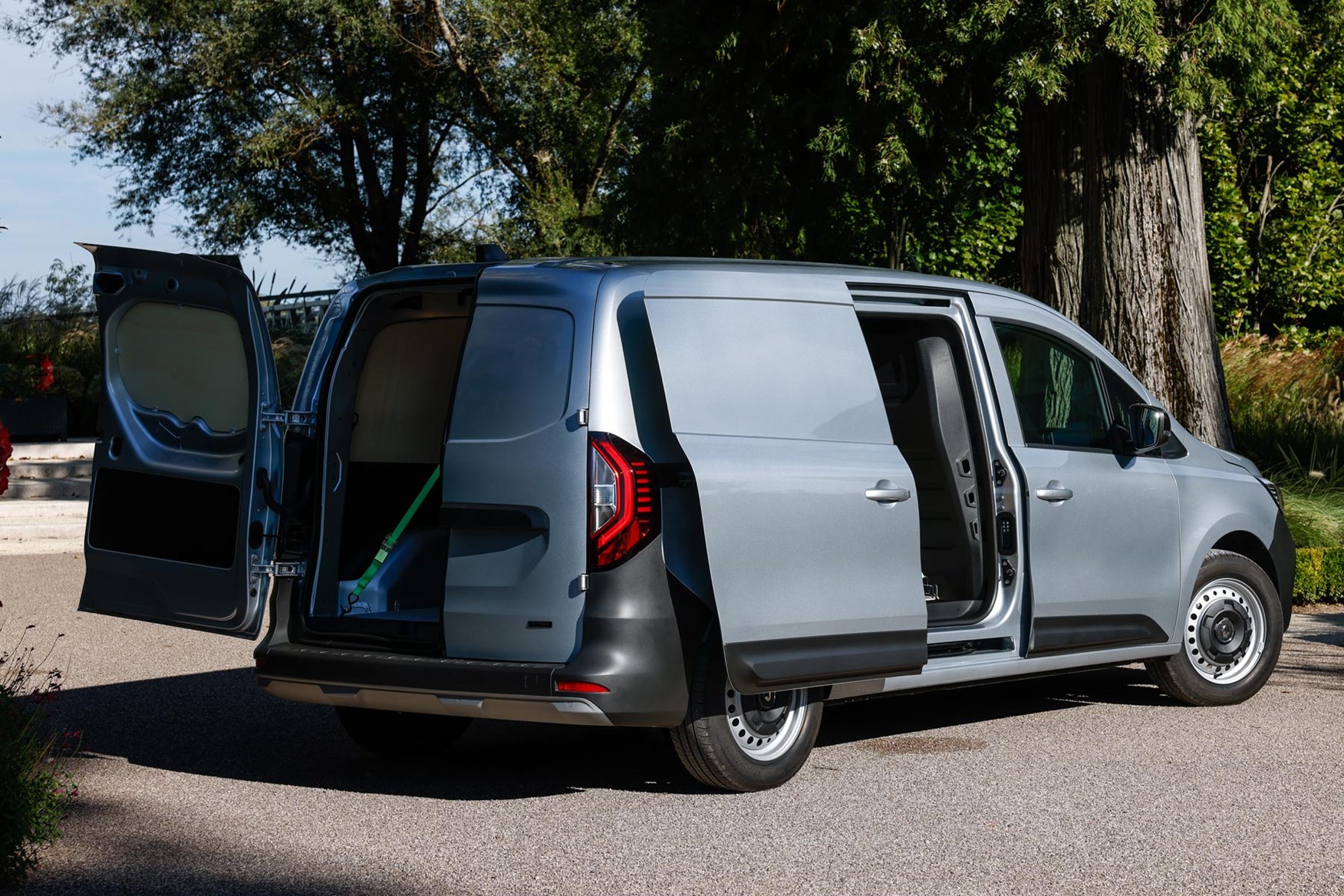
We've driven both L1 and L2 versions, although not back-to-back as yet. However, there seems little discernible difference between the two rear axles. The longer model still rides just as smoothly over bumps and deals equally well with corners. There is certainly no dynamic drawback to going for the bigger version with the larger payload.
- Modern and simple interior
- EV elements fully integrated
- Lacks clever features
Because the Kangoo E-Tech was designed to be electric from the outset, the cabin is pleasingly unfussy when it comes to EV integration. There are no confusing or idiosyncratic elements – it all looks and works as you would hope, with data well presented in a clear and simple manner on the instrument cluster.
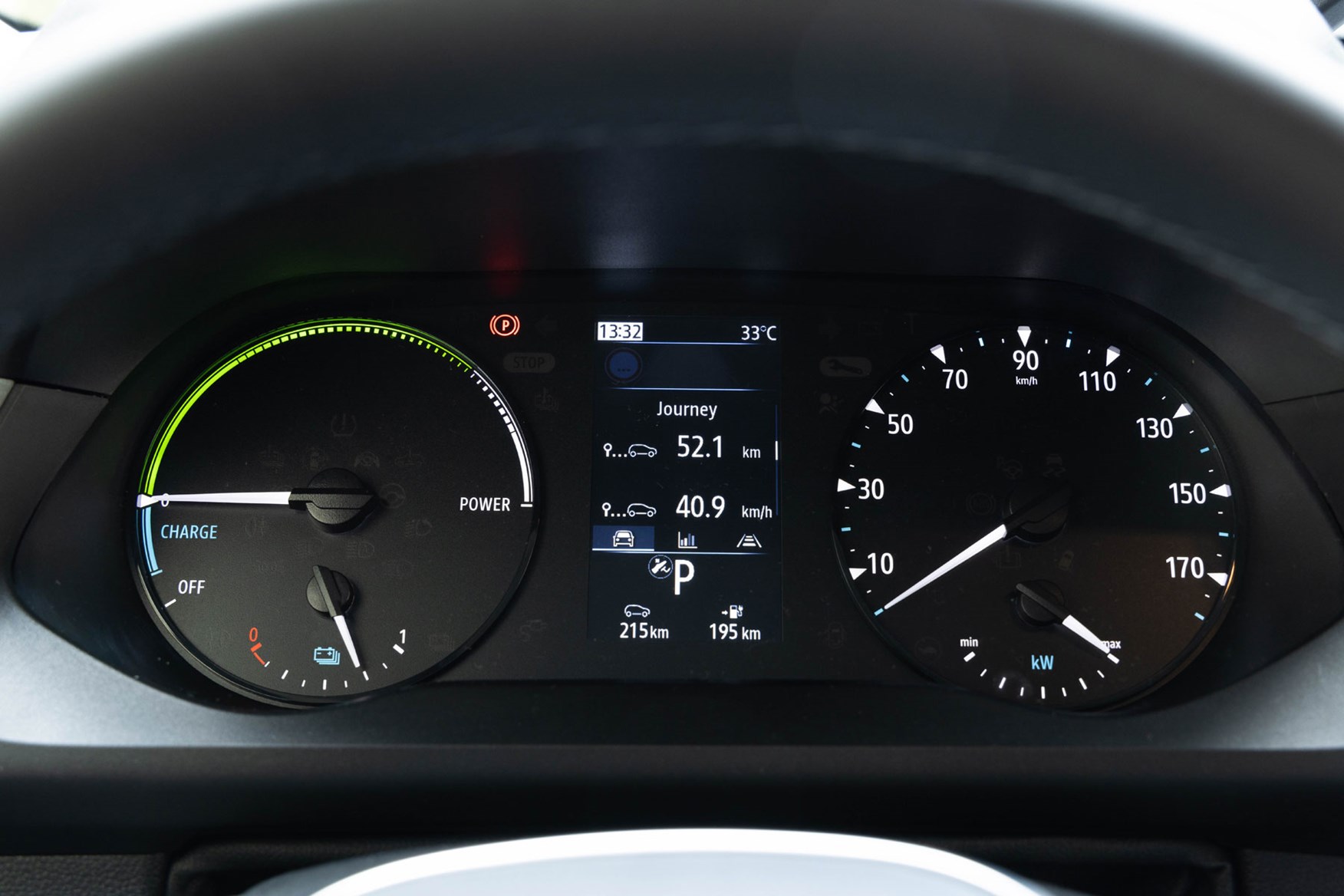
There is a simple gear lever, well-integrated buttons for controlling the major functions relating to driving and infotainment and a decent amount of space for passenger and driver alike to get comfy. Taller drivers – those a few inches in excess of six foot – might find that the seat doesn’t go back as far as they would like, but there is a welcome amount of lateral room with two on board.
There is a choice between a two-seater and a version with, nominally, space for three across the front. In reality, though, the cabin is not fantastically wide, so the middle seat is one for small adults on occasional trips only - if you are a team of three that regularly travel all together then you might find that the tight legroom and width is wearing.
Interior practicality
What is a real shame is that the UK doesn’t get many of the clever tricks offered on left-hand drive models. As well as the trick swivelling bulkhead and folding front seat, this even extends to the huge glovebox that is replaced by a much smaller, more conventional space.
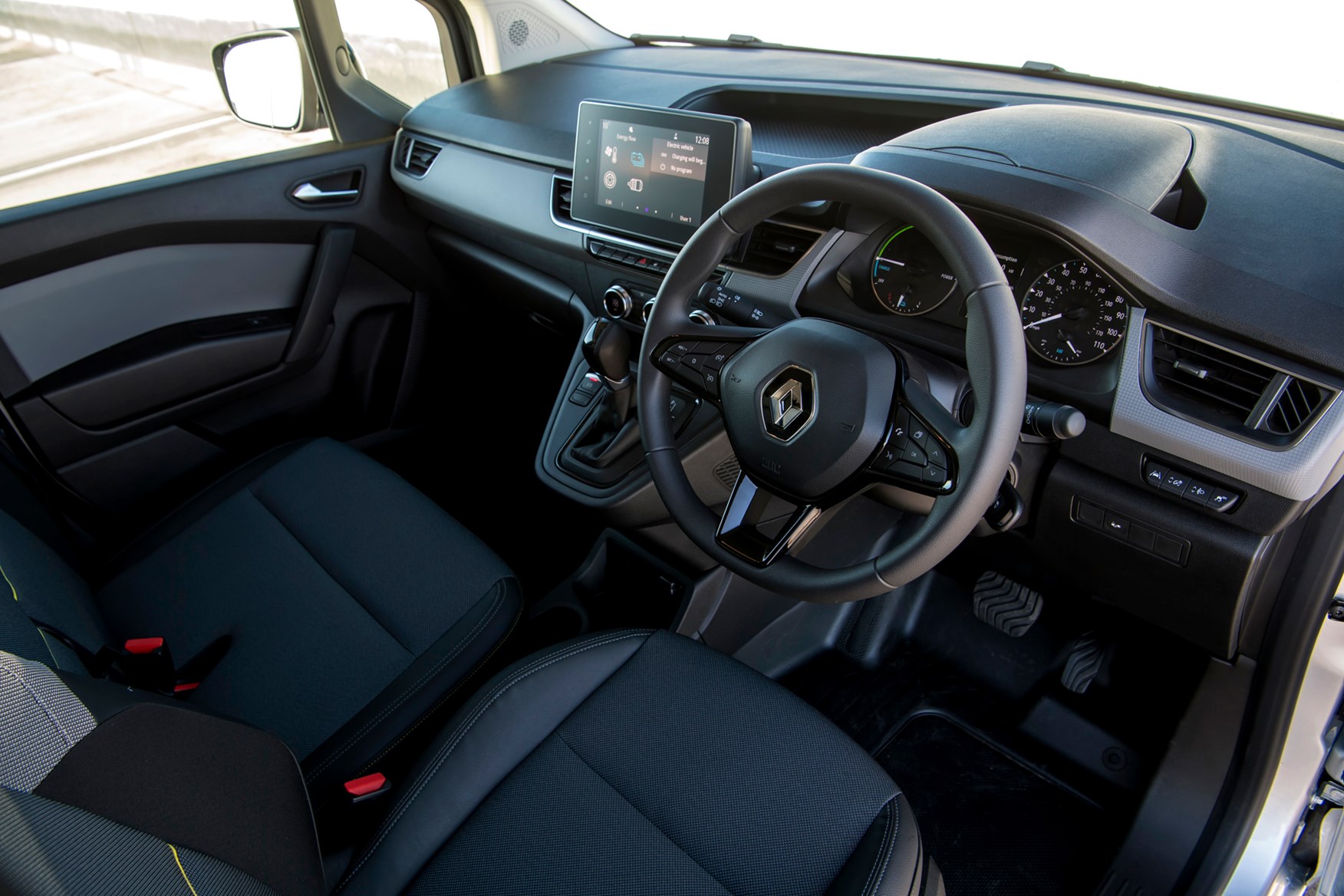
This is one of the reasons why the storage space in the Kangoo is comparatively modest. Although there is an OK-sized overhead slot, and some top-of-dash boxes with lids, the door pockets are only big enough for one bottle and a few small items. The box between the two seats is deep but not very long so it is good for tall items rather than large ones.
One very welcome element to those dash-top storage boxes is that they play host to two of the USB slots. This means you can either pop your phone out of sight for charging or, because there is a small slot to allow a wire to run out, you can secure your phone in the dedicated holder that sits between the main screen and the steering wheel and still have it charging without having wires dangling all over the place and getting in the way. There is a dedicated slot for putting your phone on in that box too, but not all phones will fit in, especially if you have a case on your handset.
The 8.0-inch touchscreen is clear and relatively simple to operate, even if it is not always the swiftest setup. Thankfully there is a row of clear and chunky dials set lower on the dash for operating the air conditioning and temperature.
For those that don’t want to deal with wires then you can get wireless charging too.
Crew cab cleverness
We've not had a chance to drive the crew cab model yet, but we have had a close look at a right-hand drive version and been able to play around with the rear seats.
Like its rivals from Citroen and Peugeot, the Kangoo has a clever system that allows you to move the bulkhead behind the second row of seats forwards so you can convert it into an almost full-sized van. The system looks a little more complicated to use than that in the Stellantis vans. Those require you to fold down the seats and then move the bulkhead forwards, in a multi-stage process.
The Kangoo takes a much more origami-like approach. You release the seats with a small handle up by the top of the side seats and then it all folds in on itself, with the mesh bulkhead moving towards the ceiling and the seats forming the new barrier between the loading bay and the cabin. There is a small handle on the side of the seats to help guide it into place.
To reverse it you then pull on a little red strap handle up on the ceiling and unfold it. It can take a little jiggling to get it to go back into place but it should be doable by one person in one movement.
Clever though it might be, it doesn't feel better than the Citroen's system. On the Citroen you get three individual seats, each with Isofix. This setup wouldn't permit Isofix, so you are limited to the one connection in the front of the cabin.
- UK pricing sees entry level model cheaper than rivals
- Electric running costs still much cheaper than diesel
- Qualifies for government low-emission grant
The electric version of the Renault Kangoo is notably more expensive than the models with an internal combustion engine, but this is par for the course among rivals. It is, however, marginally cheaper to buy than the direct rivals such as the Citroen e-Berlingo - by about £500 before the various grants are taken into consideration. It starts at £30,600 (not including VAT) but because the government has kept the van low-emission grant in place, this comes down to £28,100 for the Start version. The walk up to Advance adds £1000 to the price, while the step from the shorter to longer wheelbase adds £1500.
Despite being more expensive to buy, there are plenty of other ways in which it will be able to make up the difference.
Renault Kangoo E-Tech servicing
Services for the Renault Kangoo E-Tech are only required every two years / 24,000 miles, so there is no need to run up large bills on a regular basis. The exception to this is the first year - the first service is due after 12 months or 12,000 miles.
Renault Kangoo E-Tech warranty
The Kangoo E-Tech only gets a three-year warranty as standard - some way short of the maximum of 10 years offered on the Toyota Proace City and short of the five years that some Renaults have provided in the past - but it does cover you for 100,000 miles, for those long-distance EV drivers. There is the option to extend it to five years, but only if you pay an extra £900 - more than £300 more than the extended warranty costs on the diesel version.
The battery, as is often the case with electric vehicles, gets longer cover, with an eight-year warranty on that alone. Renault has said that it will replace any battery that drops below 70% capacity, and you will get a brand-new battery with 100% capability if this happens, rather than one that is appropriate for the age of the van.
Renault Kangoo E-Tech standard equipment
There are two trim levels, named Start and Advance. The UK Kangoos will all come with a heated windscreen and heated driver’s seat as standard and, in a boost for productivity, fast charging on all versions.
Start gets:
- DAB digital radio with Bluetooth, USB and aux input
- Auto lights and wipers
- Single passenger seat with Isofix
- Full steel bulkhead
- Manual air conditioning
- Electric windows
- Heated and powered door mirrors
- Twin side doors
- Driver’s airbag
- Hill start assist
- Emergency call function
- Cruise control and speed limiter
- 3.5-inch TFT information display
Advance adds:
- An 8.0-inch touchscreen with Android Auto and Apple Carplay
- Electric parking brake
- A front passenger bench seat
- LED lighting in the load area
- A wide view mirror
- Body coloured door rails
- Reverse parking sensors
The Crew van tweaks the kit list a little, with the spare wheel replaced by a tyre repair kit. The plan is for the side sliding doors to come with windows, too, although this may be impacted by customer demand - the likes of the Citroen Berlingo Crew Van have solid side doors in order to ensure the vehicle qualifies for commercial vehicle tax status rather than the more expensive passenger version.
Renault has more experience than most with making electric vehicles, and electric vehicles in particular. The Kangoo Z.E. first went on sale over a decade ago and reliability records are good on the whole.
The new E-Tech is a totally different vehicle, though, so it isn’t worth reading into that too closely. That said, the co-development with Mercedes and Nissan should provide further reassurance.
- Wide range of safety systems
- On-the-move and visibility technology
The systems on offer in the Kangoo E-Tech are encouraging. There is a good selection of autonomous tech available, with adaptive cruise control, lane keeping assist, a low-speed parking assistant, and active braking assist all possible.
Not all the tech is for emergency use though, with a ‘Permanent Rear View Assist’ on offer too – a camera that acts as a rear-view mirror. It’s a clear system, with the usual caveats that it sometimes takes a fraction of a second for your eyes to adjust to the different depth perception. It is set rather high, though, so it tends to look down on vehicles that are just behind you in traffic. There is also a wide-view mirror on the passenger sun visor for the Advance trim, which helps allow you to see more of the blind spot. Advance also comes with a Thatcham alarm included.
Disappointingly there is only the one airbag for the driver as standard, though. Plenty of the driver assistance tech is offered as part of a series of packs, with the Advanced Driver Assist Pack 1 the most comprehensive. This will cost you £1,500 and brings the following:
- Active Emergency Braking System
- Over Speed Prevention and Traffic Sign Recognition
- Blind Spot Warning
- Lane Keep Assist
- Automatic high-beam lights
- Adaptive cruise control
- Driver attention alert
Pack 2 offers all of the above apart from the Adaptive cruise and the driver attention alert.
Parking Pack 2 is the more comprehensive parking option, including:
- Rear view assist
- 360-degree parking sensors and hands free parking
In an effort to reduce opportunistic theft, Renault has removed the lock cylinders from the new Kangoo’s doors.
There’s also an optional ‘super locking system’, which only allows the rear of the van to be unlocked if the remote is used or the keyless entry card is detected in the cab. The unlock buttons for the rear fitted inside won’t work without this.
Which Renault Kangoo E-Tech is best for me?
The Kangoo E-Tech’s relatively simple range means that it isn’t hard to pick which version suits you best. There are only two lengths to choose from but there are more versions to pick from, including a Crew Van with clever folding seats in the second row that let you turn it into a panel van.
Then it is just a case of picking which of two trims to go for, but with fast charging as standard and heated seats and windscreen also included, it is not as if the lower model is sparsely equipped.
When it comes to the important stuff, there is only the one battery and motor combo, so there is no deciding needed there.





















